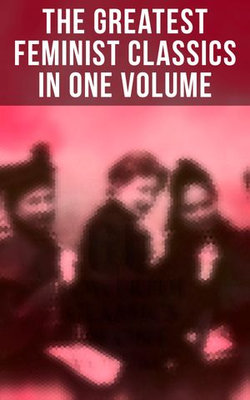The Greatest Feminist Classics in One Volume' encapsulates an extraordinary array of feminist voices, weaving together a rich tapestry of literary styles from the pens of some of the most influential writers from the 18th to the early 20th century. This collection offers a panoramic view of the evolving themes of gender equality, social reform, and the personal struggles and triumphs of women. From the eloquent advocacy of Mary Wollstonecraft to the poignant narratives of Kate Chopin, and the piercing social critiques of Virginia Woolf, this anthology spans a diverse range of genres including novels, essays, and plays, each piece resonating with the fervor for women's rights and contributing uniquely to the feminist discourse. The influencers behind these works represent a spectrum of backgrounds, yet they share a common thread in their commitment to challenging the societal norms of their times. Figures like Jane Austen and Charlotte Brontë revolutionized the portrayal of women in literature, while activists like Elizabeth Cady Stanton and Sojourner Truth fought tirelessly for women's suffrage and civil rights. Literary giants such as Leo Tolstoy and D.H. Lawrence provide perspectives that underscore the global resonance of gender discourse, further enriching this compilation. Together, these authors not only reflect the historical and cultural milieus of their respective eras but also underscore the universal plight and resilience of women. 'The Greatest Feminist Classics in One Volume' is more than an anthology; it is a journey through the milestones of feminist literature. It invites readers to explore seminal works that have shaped and been shaped by the feminist movement, offering invaluable insights into the ongoing struggle for gender equality. This collection is indispensable for anyone earnest in understanding the complexities of gender dynamics and their portrayal through literary masterpieces. Delve into this meticulously curated volume and embrace the opportunity to witness the powerful dialogue between these pivotal voices in feminist history.





Share This eBook: